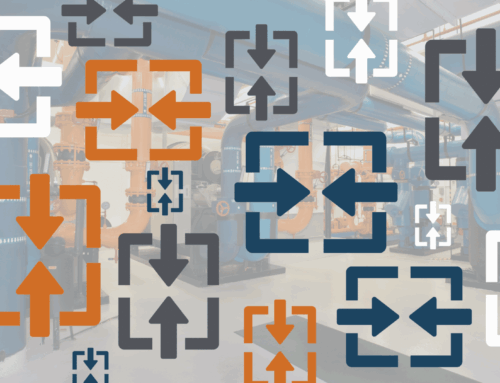Reporting
It’s no secret that reporting can get a bad rap sometimes. And it’s not hard to see why when you open a spreadsheet with 20 tabs and an ocean of data from someone asking you what you think. Digesting the report becomes a chore and leaves many to wonder: “What am I supposed to do with this?”
As more and more organizations interact remotely and communicate virtually, data reporting will be a key tool tied continued success and differentiation. This means that you and your organization don’t have time to simply go through the motions of reporting, wasting not only the report creator’s time but also the report reviewer’s time as well.
To improve data reporting throughout your organization, analyze the goal and purpose of reporting. Start with reviewing the elements of reporting. From there, you can determine what is and isn’t working. And then home in on the best path forward to streamlining and improving your data reporting methods. By prioritizing effective reporting, you’ll not only improve communication throughout your organization but also highlight the importance of data-informed decision-making.
Reporting Elements
To start with, when reviewing the elements of reporting, focus on the three key elements to reporting: information, reason, and audience. What is the information that you need to communicate? Why do you need to communicate this information, or in other words what’s the reason? Who will consume this information (ie the audience)? If you have a definitive answer for each question, great! If no, there’s room for improvement.
To answer these questions, understand the different types of reports and how they impact the information, reason, and audience. No matter your industry or organization you are a part of you can categorize reporting by:
- Regulatory/Compliance: both internal and external parties require certain information to be provided at specific intervals. Typically, the requesting party will require specific information and formatting.
- Validation: simply what happened in the past. This can then be used for additional analysis and decision-making.
- Forecasting/Trending/Planning: based on past data or assumptions, what do you or the organization need to do to improve or be better prepared for the future
- Issue Resolution/Root Cause Analysis: this focuses not only on what happened in the past but also analyzes indicators that will help keep the issue from happening again.
Once you have a clear understanding of the report type, it will be easier to clearly define the report information, reason, and audience. And if you find yourself categorizing a single report as multiple types, consider breaking a part the reports. A single report can’t be all things to all people.
Improvements to Reporting
With a clear understanding of the type of the report and the information, reason, and audience, how can you then improve your reporting capacity? Here are some tips we’ve compiled from working with our customers as well as from our own processes.
1. Automation: look for ways to speed up the process of reporting through automation.
- Use formulas instead of set values. It may take more time to create the report initially, but you will save time in the long run.,
- Check with your historian provider to see how they can help automate the process. With an Excel add-in, you can let the historian do the work for you and update information in templates.
- Determine if someone in your organization can run all the reports on the backend and save to a central location for quick access. This not only saves time creating the reporting but also accessing the information. Something as simple as a standard document naming that clearly states what it is and the date saves time when you’re searching for information.
2. Visualizations: reporting doesn’t mean just numbers as you must consider your audience.
- Consider what is the most effective method to deliver your message to your audience. Also consider the amount of time your audience has. If you know your report will only have their attention for 10 minutes, visualizations like graphs, pie charts, or short animations may better deliver your message than all the details.
- Know when it’s time to be creative and innovate and when it’s time to follow instructions. For example, for regulatory/compliance reporting, follow directions and don’t waste time on creating visualizations that no one will review.
3. Context: data is meaningless without context and context is a key element of reporting. Therefore, in order to be effective, reporting needs context.
- Assumptions are the enemy of reporting. It may be clear to you, but that doesn’t mean it will be clear to others. No matter if you talked at length about the content of the report and its meaning, always note what the elements are and what they mean. Document; document; document.
- Analyze your audience and their degree of understanding. A good practice is that for every visualization or graph, there should be corresponding context and interpretation. Don’t leave anything to chance or misinterpretation.
- Help yourself by including context so that in a few weeks or months, you will not have to recall any of the meaning or context because it will be written there.
4. Measurement: measure what is meaningful for you and your organization, not just what is available.
- Sometimes with reporting we can’t see the forest for the trees. Reporting is meant to be useful and meaningful, not just a transfer of information for the sake of transferring information. Survey your reports and analyze the gaps and shortcomings and make a plan to overcome them.
- Look for other ways to measure desired information beyond sensor data. For example, in a data historian, you can create calculated tags to measure various metrics and indicators like performance and efficiency. There are also predictive analytics tools that use machine learning and advanced patter recognition to calculate a plant and equipment health index. By expanding your expertise with technology providers expertise, you can enhance your reporting and knowledge.
5. Accountability: everyone should be accountable to the information shared in reporting including the good and the bad.
- As much as possible, access should be open and transparent for those involved. If concerned about changes, use technology to your advantage.
- Create an avenue and environment for discussion. This can be a meeting or a call or an online chat. Whatever works for you and your team and your schedule. Creating the report should not be the end of the story.
Next Steps
How can you implement the tips above to improve your reporting workflow? Have ideas but need a little help? Call HanAra!
Reach out to learn more about our advanced data historian, HanPrism, and it’s other insightful feature, the dashboard.






